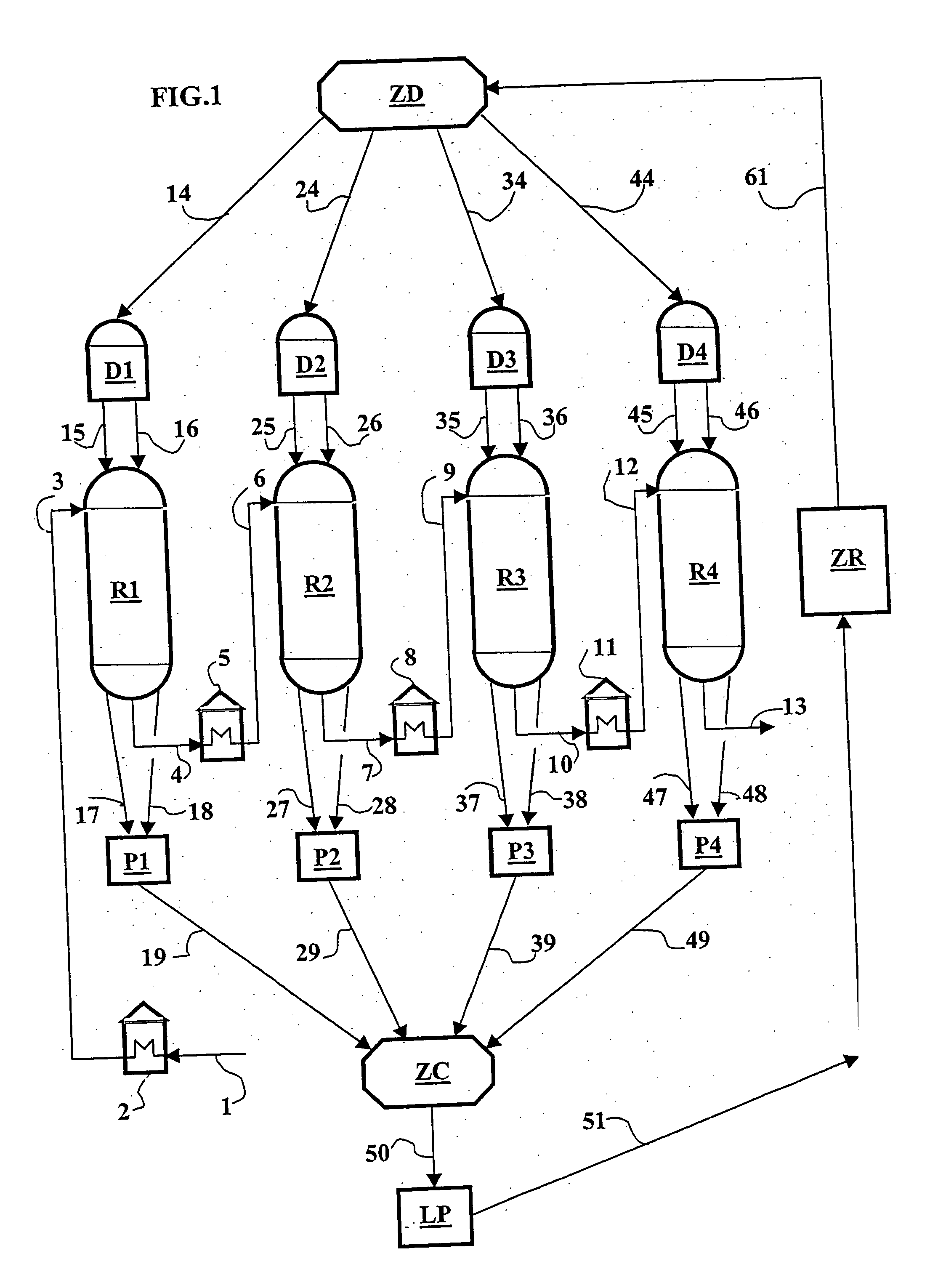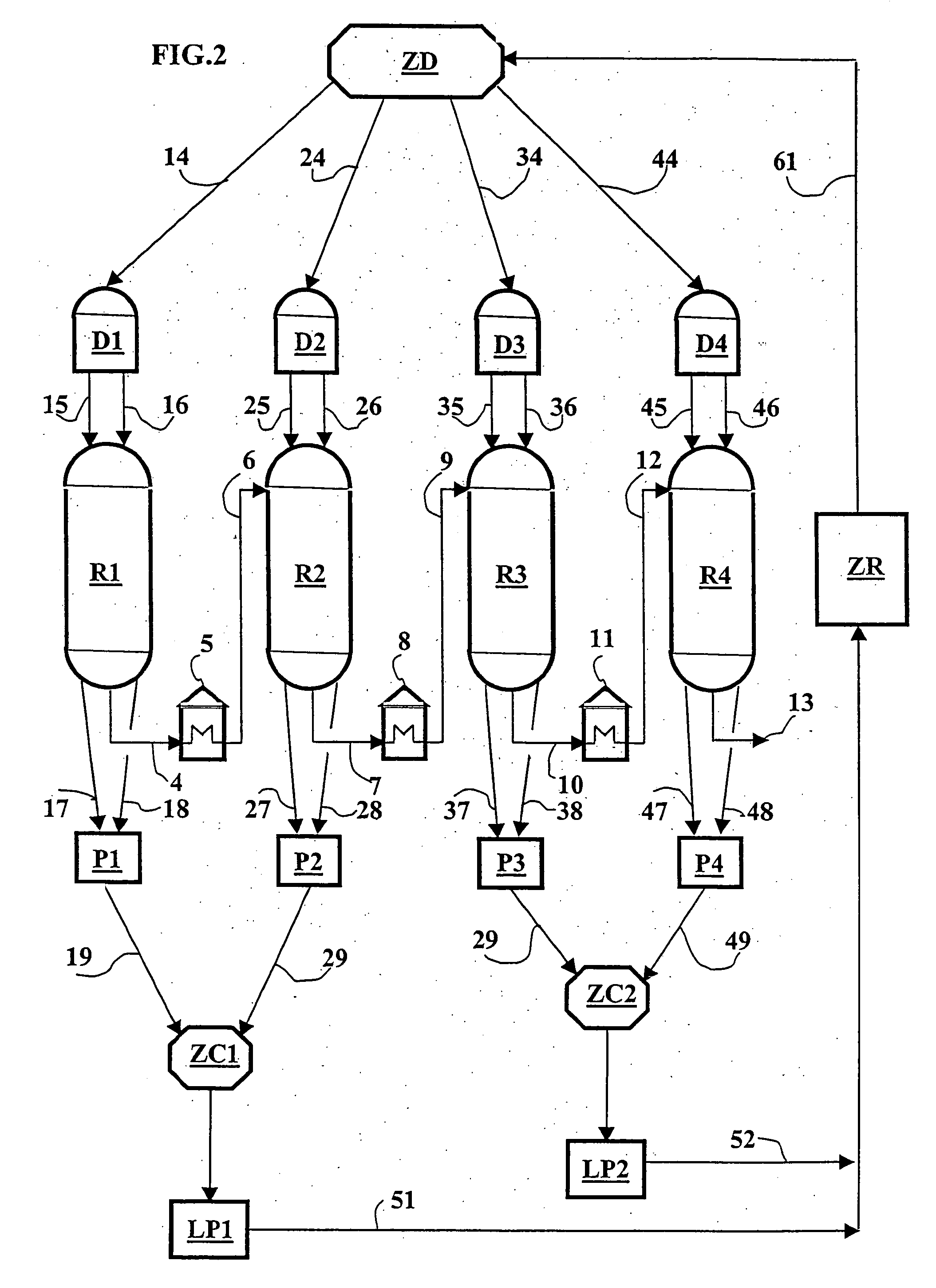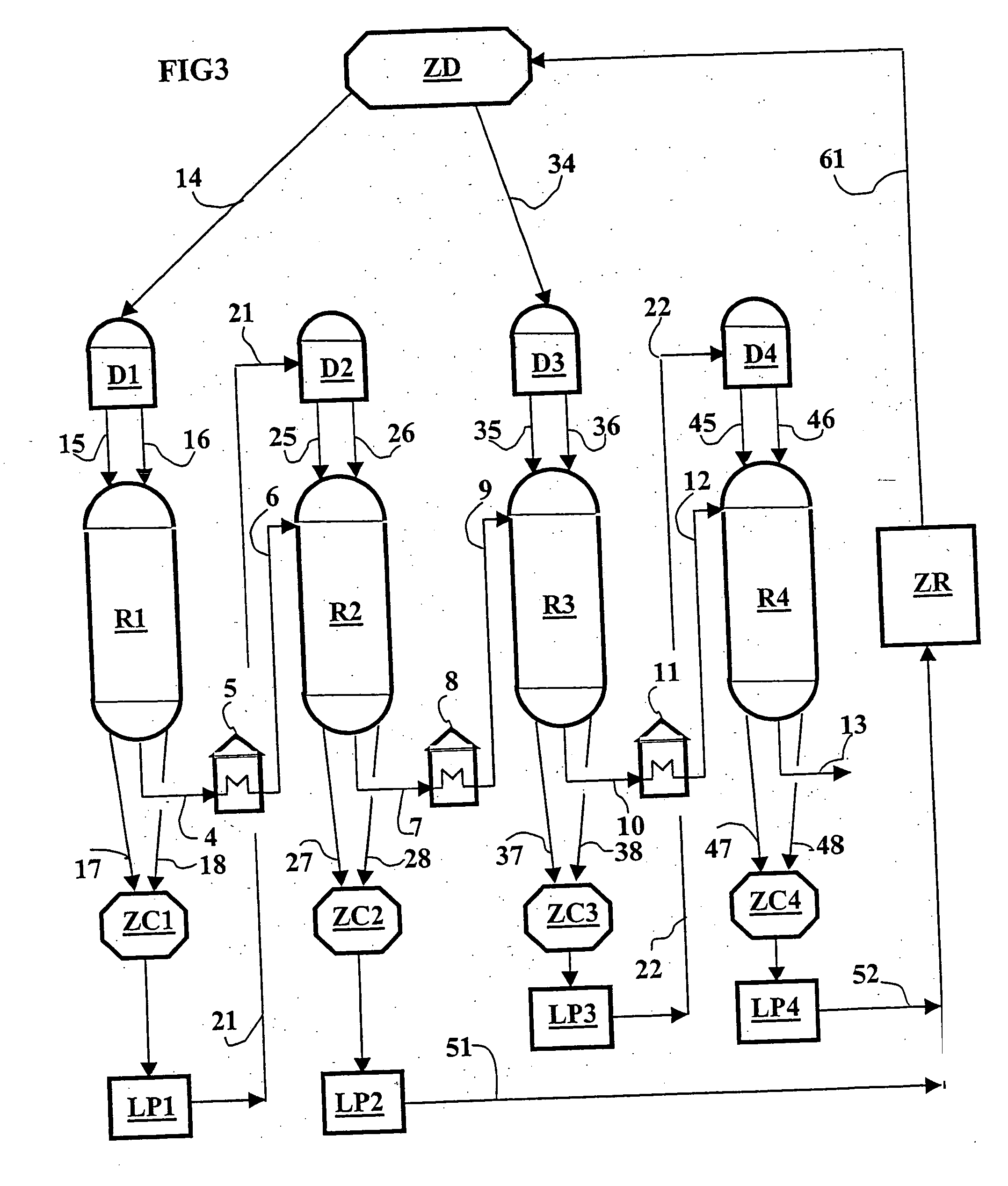Process of regenerative reforming
a technology of regenerative reforming and process, which is applied in the direction of catalytic naphtha reforming, organic chemistry, naphtha treatment, etc., can solve the problems of low selectivity of hydrocarbons into coke, and the contents of coke accumulated on the catalyst can be very significant, so as to achieve the same level of rigor of operating conditions, less catalyst, and economic attractive
- Summary
- Abstract
- Description
- Claims
- Application Information
AI Technical Summary
Benefits of technology
Problems solved by technology
Method used
Image
Examples
example 2
According to the Invention
[0063] So as to carry out comparisons on an identical basis, the research octane number of the reformate is kept at 102 in all of the following examples.
[0064] In this example, the catalyst that is obtained from the regeneration zone supplies each of the four reactors in parallel.
[0065] The operating pressure in the separator tank is kept at 0.23 MPA, and the other operating parameters are indicated in Table 1.
[0066] A reduction of the coke content of the catalyst at the outlet of each reactor is noted relative to the first example. In particular, at the outlet of the last reactor, the coke drops to 3.76% from 5.87% at the outset. Furthermore, the reformate yield is higher.
example 3
According to the Invention
[0067] In this example, the operating pressure in the separator tank is lowered to 0.08 MPa. The H2 / HC ratio is kept at 2, and the volumetric flow rate is increased to 2.5 h.sup.-1, or an increase in the feedstock flow rate of 25%, or expressed equivalently, a reduction in the amount of catalyst of 20%. The reformate yield passes to 90.55% (at the outset at 88.9%). It is also noted that the coke yield is raised to 5.02% from 3.76% in Example 2, but it remains less than that at the outset (5.87%).
example 4
According to the Invention
[0068] In this example, the operating pressure is kept at 0.08 MPa, but the H2 / HC ratio is lowered to 1.3 so as to compare the fourth example with the starting conditions (Example 1) with the same level of coke. The reformate yield that passes to 91.44% (or 2.5 points more relative to the starting conditions) is again improved, and the coke yield virtually rejoins the value at the outset or 5.8%.
[0069] On the basis of a 100 T / h capacity, the gain in productivity on the reformate with a constant quality corresponds in this fourth example to a production difference of about 20,000 T / year of reformate, or a cash flow of more than about 1.2 million euros per year (baseline: 6 centimes / kg).
[0070] This new concept therefore makes it possible to obtain a better selectivity of operation with the same level of rigor of operating conditions (temperature and octane number) and this with a smaller amount of catalyst.
PUM
| Property | Measurement | Unit |
|---|---|---|
| operating pressure | aaaaa | aaaaa |
| molar ratio | aaaaa | aaaaa |
| boiling point | aaaaa | aaaaa |
Abstract
Description
Claims
Application Information
 Login to View More
Login to View More - R&D
- Intellectual Property
- Life Sciences
- Materials
- Tech Scout
- Unparalleled Data Quality
- Higher Quality Content
- 60% Fewer Hallucinations
Browse by: Latest US Patents, China's latest patents, Technical Efficacy Thesaurus, Application Domain, Technology Topic, Popular Technical Reports.
© 2025 PatSnap. All rights reserved.Legal|Privacy policy|Modern Slavery Act Transparency Statement|Sitemap|About US| Contact US: help@patsnap.com



